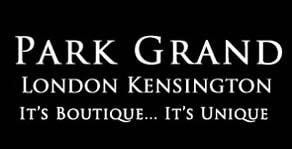The Natural History Museum has been a hub of history and science for centuries. Boasting one of the largest collections of historical specimens and ancient artefacts in the world, it offers a unique look at the story of the planet.
During your relaxing break at our hotels near Earls Court London, be sure to take a trip over to Cromwell Road and discover the hidden treasures at the Natural History Museum. Here are some interesting facts to get you excited before checking into the Park Grand Hotel Kensington.
New name
Although the museum is now a global brand, it wasn’t always called the same thing. Until 1992, it fell under the umbrella of the British Museum and was officially referred to as the British Museum (Natural History). It was decided that the name would be changed to create a more simplistic title.
Albertopolis
As you explore the area surrounding the Natural History Museum, you’ll find a number of other institutions and museums. Not many people are aware that this small area has a name. Albertopolis is the colloquial name of this area in South Kensington and has been home to several museums for centuries.
Construction time
The building of the Natural History Museum took seven years to complete and was a process that involved hundreds of construction workers, architects and designers. The building was finally completed in 1881 when its doors were opened to the public.
Botanical collection
Many of the collections and exhibits at the Natural History Museum are often overshadowed by crowd favourites like the dinosaurs and the giant blue whale but the botanic collection is one of the biggest in the world. The museum boasts 70 million botanical specimens ranging from herbs to wildflowers.
Free to enter
One of the great things about the Natural History Museum, and most of the museums in London, is that you don’t have to pay to get in. If you’ve ever wondered how they manage to keep it running, it’s thanks to regular donations and government grants.
Big crowds
If you’ve ever visited the Natural History Museum, you’ll be well aware of the huge crowds that often gather in the halls. The reason for such long queues and big crowds is that the museum gets an annual figure of over 4 million visitors.
Famous architect
There were several design solutions proposed during the development of the Natural History Museum and several designers were involved in the process. However, the main architect in charge of the build was the renowned designer, Francis Fowke. What’s interesting is that he was also responsible for iconic buildings such as the Royal Albert Hall and the V&A Museum.
Attenborough Studio
Anyone with an interest in nature and science will be familiar with David Attenborough and his many TV projects. The beloved broadcaster and naturalist is one of the biggest names in the industry and has had a section of the museum named after him.

















